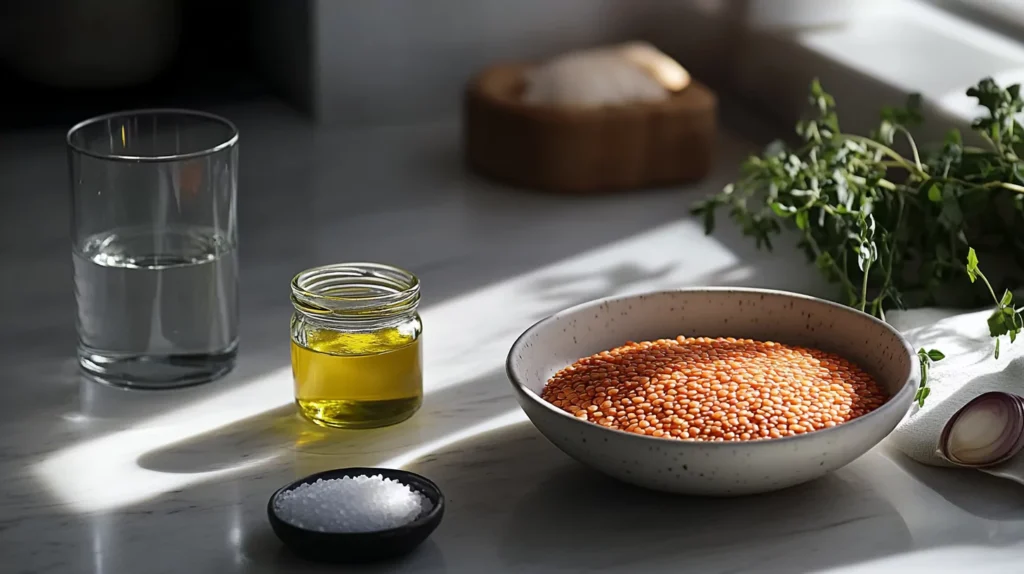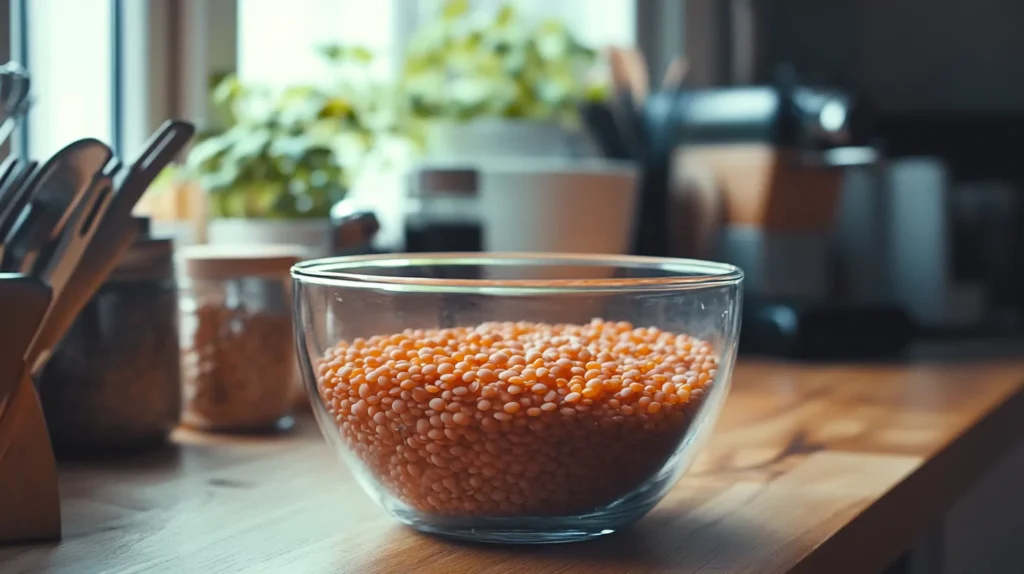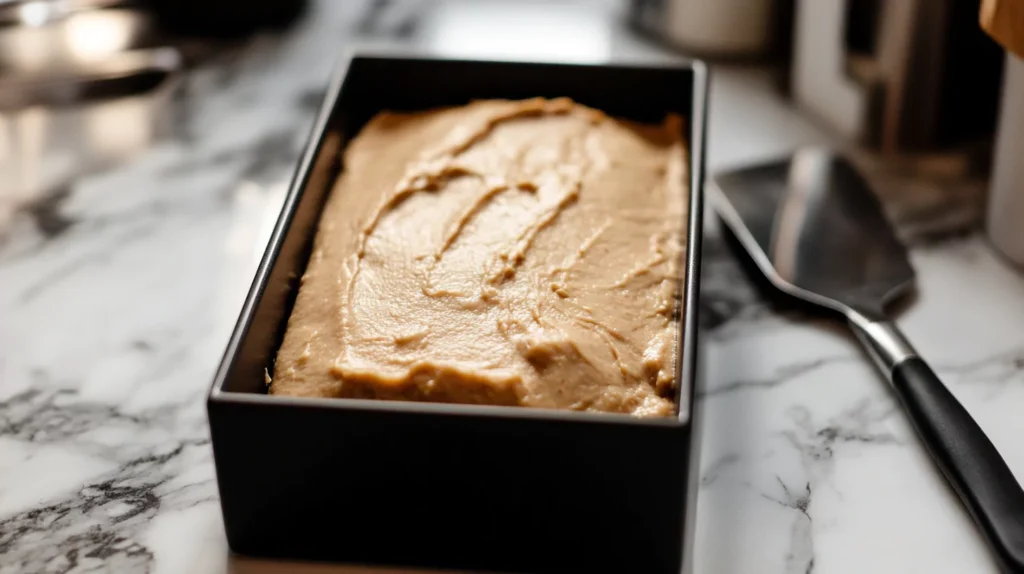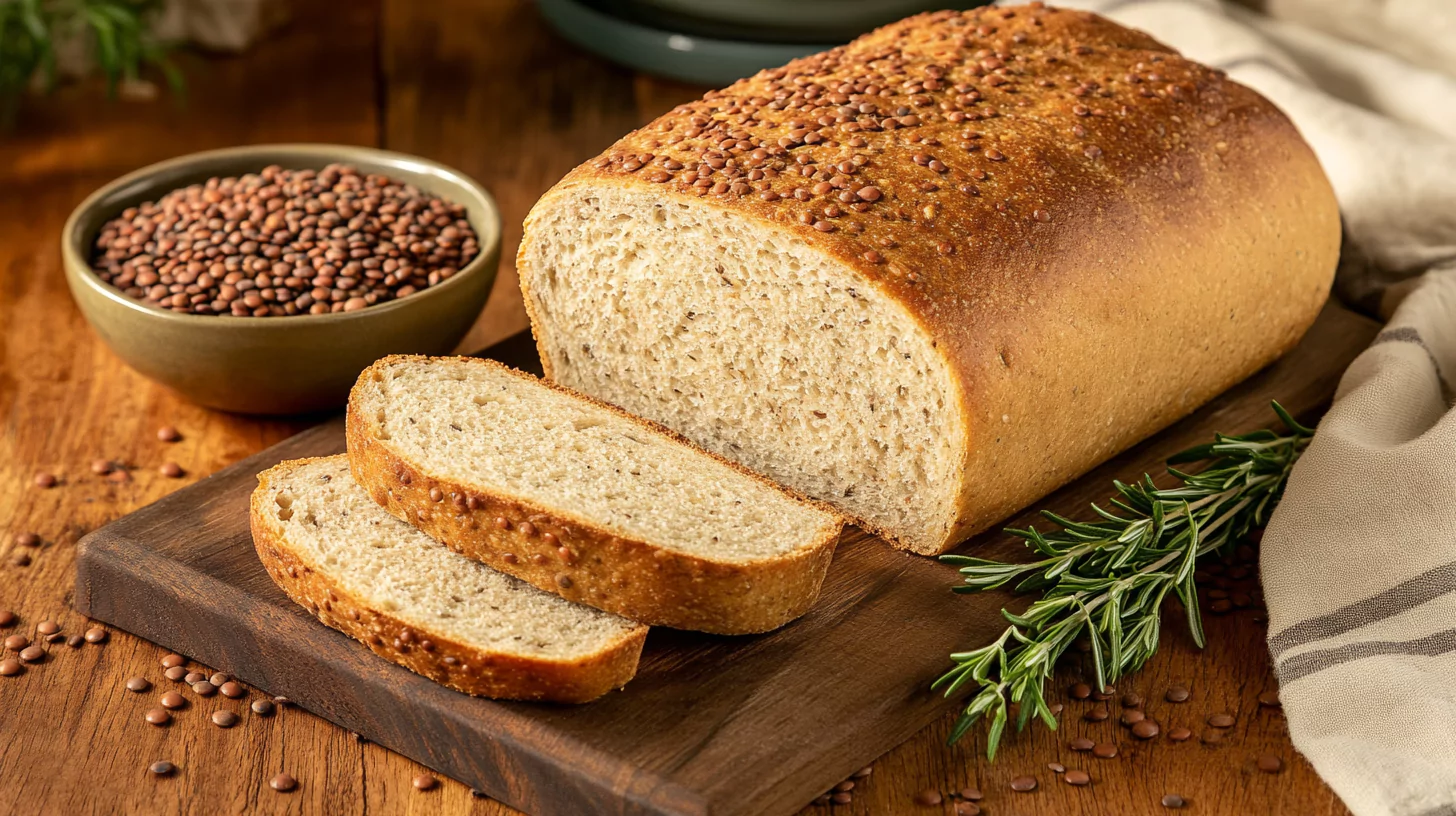Lentil bread is a wholesome, versatile, and nutrient-rich alternative to traditional bread. Packed with plant-based protein and fiber, this bread is perfect for anyone seeking a healthier option. Whether you’re avoiding gluten, exploring vegan diets, or just trying something new, lentil bread is a great choice. Its dense texture and earthy flavor make it ideal for both savory and sweet toppings.
Not only is lentil bread simple to prepare, but it also requires minimal ingredients, making it an affordable and accessible recipe for any home cook. This lentil bread recipe guide will walk you through the process, ensuring success even for beginners.
Benefits of Lentil Bread
Lentil bread is more than just a tasty option; the lentil bread recipe offers an array of health benefits that cater to various dietary needs and preferences. Packed with plant-based protein, fiber, and essential nutrients, this lentil bread recipe is a versatile choice for anyone looking to enhance their diet. Here are some key advantages:
High in Nutritional Value
Lentils are nutritional powerhouses. They are rich in protein, fiber, and essential vitamins and minerals like iron, folate, and magnesium. When transformed into bread, they retain these nutrients, making lentil bread an excellent choice for balanced meals. This bread provides sustained energy, supports digestive health, and contributes to overall wellness.
Gluten-Free and Allergen-Friendly
For those avoiding gluten due to celiac disease or dietary preferences, lentil bread is a fantastic alternative to wheat-based breads. Unlike traditional bread, which often contains gluten, lentil bread is naturally gluten-free when made with pure lentils and no additional grains.
Perfect for Vegan and Vegetarian Diets
Lentil bread is plant-based, making it suitable for vegans and vegetarians. The high protein content of lentils helps fill the nutritional gap often experienced in plant-based diets, ensuring sufficient intake of essential amino acids.
Affordable and Sustainable
Lentils are one of the most economical and environmentally friendly foods available. They have a low carbon footprint, require minimal water to grow, and are widely accessible. Making lentil bread supports sustainable eating habits without compromising on flavor or nutrition.
Ingredients Needed
Before diving into the recipe, gather the following ingredients. Each one plays a vital role in creating a flavorful and nutritious loaf of lentil bread recipe.

Core Ingredients
- Red or Green Lentils (2 cups): Choose between red lentils for a softer texture and slightly sweet flavor, or green lentils for a more earthy, hearty taste. Both work well.
- Water (2 cups): Essential for soaking the lentils and blending the mixture into a batter.
- Salt (1 teaspoon): Enhances the natural flavor of the lentils.
- Olive Oil (optional, 1 tablespoon): Adds a subtle richness and helps prevent sticking.
Optional Additions
- Herbs and Spices: Garlic powder, onion powder, rosemary, or cumin can elevate the flavor profile.
- Seeds: Add chia, flax, or sunflower seeds for added texture and nutrition.
- Sweeteners: A touch of honey or maple syrup for a sweeter loaf.
Substitutions and Variations
- If lentils are unavailable, split peas or chickpeas can be used as a substitute.
- Replace olive oil with avocado oil or coconut oil for unique flavor twists.
- For a protein boost, mix in a tablespoon of nutritional yeast.
Preparation Process
Making lentil bread is straightforward and involves just a few steps. By following this detailed guide, you’ll have a delicious and healthy loaf ready to enjoy.
Soak the Lentils

Soaking the lentils is crucial to soften them for blending and to make them easier to digest.
- Instructions:
- Measure 2 cups of dry lentils and rinse them thoroughly under cold water to remove debris.
- Place the rinsed lentils in a large bowl and cover them with 2 cups of water.
- Let the lentils soak for at least 3 hours or overnight. They will absorb water and become plump.
Prepare the Batter
Once the lentils are soaked, it’s time to create the bread batter.
- Instructions:
- Drain the excess water from the lentils but reserve about ¼ cup in case the batter needs thinning.
- Transfer the soaked lentils to a blender or food processor.
- Add salt, optional olive oil, and any herbs or spices you’re using. Blend until the mixture becomes smooth and resembles a thick pancake batter. If needed, add the reserved water, a tablespoon at a time, to reach the right consistency.
Preheat and Prepare the Oven
Preparing your oven and pan ensures a perfect bake.
- Instructions:
- Preheat your oven to 375°F (190°C).
- Line a loaf pan with parchment paper or grease it lightly with oil to prevent sticking.
Bake the Bread

Now it’s time to bake your lentil bread to perfection.
- Instructions:
- Pour the batter into the prepared loaf pan, smoothing the top with a spatula.
- Place the pan in the preheated oven and bake for 35–40 minutes. The bread should be firm to the touch and golden brown on top.
- To check for doneness, insert a toothpick into the center. If it comes out clean, the bread is ready.
Cool and Slice
Allow the bread to cool completely before slicing to prevent crumbling.
- Instructions:
- Once baked, remove the bread from the oven and let it rest in the pan for 10 minutes.
- Carefully lift the bread out using the parchment paper or a spatula.
- Transfer to a wire rack to cool completely, then slice into even pieces.
Tips for Success
Lentil bread is simple to make, but a few key tips can help ensure the best results every time.
Avoiding Common Mistakes
- Don’t Rush the Soaking Process: Properly soaked lentils are essential for a smooth batter. Skipping or shortening this step may result in uneven texture.
- Check Consistency: The batter should be thick but pourable. Too thin, and the bread won’t hold its shape; too thick, and it may bake unevenly.
- Season Generously: Lentils have a mild flavor, so don’t be afraid to experiment with herbs, spices, or seeds to enhance the taste.
Storing and Freezing
Lentil bread stores well, making it a great option for meal prep.
- Storing: Keep the bread in an airtight container at room temperature for up to 3 days, or refrigerate for up to 1 week.
- Freezing: Slice the bread and freeze individual portions in freezer-safe bags. Thaw at room temperature or warm in the oven when ready to eat.
Heading 3: Enhancing the Recipe
- Add Crunch: Sprinkle sesame or sunflower seeds on top of the batter before baking for a decorative and crunchy crust.
- Boost Nutrition: Mix in shredded vegetables like zucchini or carrots for added nutrients and flavor.
Recipe Variations
Lentil bread is a versatile base that can be customized to suit a variety of tastes and preferences. Here are some creative recipe variations to inspire you.
Sweet Lentil Bread
Transform your lentil bread into a subtly sweet treat with these simple additions:
- Ingredients to Add:
- 2 tablespoons of honey, maple syrup, or agave nectar.
- 1 teaspoon of cinnamon or nutmeg for warmth and flavor.
- Optional mix-ins like raisins, dried cranberries, or chopped nuts.
- Serving Ideas: Pair sweet lentil bread with butter, jam, or nut butter for a delightful breakfast or snack.
Savory Lentil Bread
For a more robust and savory flavor, try these variations:
- Ingredients to Add:
- 1 teaspoon of garlic powder or onion powder.
- Fresh herbs like chopped rosemary, thyme, or parsley.
- Grated cheese (optional for non-vegan options).
- Serving Ideas: Use savory lentil bread as a base for open-faced sandwiches or alongside soups and stews.
Regional Twists
Incorporate global flavors into your lentil bread with these regional-inspired options:
- Mediterranean: Add chopped sun-dried tomatoes, olives, and a dash of oregano.
- Indian: Mix in curry powder or garam masala and top with black sesame seeds.
- Middle Eastern: Blend in tahini and sprinkle the top with za’atar or cumin seeds before baking.
Protein-Boosted Lentil Bread
If you want an extra protein kick, incorporate these ingredients into the batter:
- 2 tablespoons of ground flaxseeds or chia seeds.
- A scoop of unflavored plant-based protein powder.
Serving Suggestions

Lentil bread is a versatile addition to any meal. Its hearty texture and neutral flavor make it suitable for a range of pairings and dishes.
Breakfast Ideas
Start your day with a nutritious slice of lentil bread:
- Top with avocado and a sprinkle of chili flakes for a quick avocado toast.
- Pair with scrambled eggs or tofu and fresh vegetables for a balanced breakfast.
- Spread with peanut butter and banana slices for a sweet and protein-rich morning snack.
Lunch and Dinner Pairings
Lentil bread shines as a side dish or sandwich base:
- Use it to make grilled sandwiches or paninis with cheese and vegetables.
- Serve alongside hearty soups like tomato, lentil, or butternut squash.
- Pair with salads for a filling yet light meal.
Snack and Appetizer Ideas
Lentil bread can also be a delightful snack or appetizer:
- Cut into small squares and serve with hummus or baba ghanoush for dipping.
- Toast lightly and top with cream cheese, smoked salmon, and dill for an elegant appetizer.
- Make mini pizza bites by topping slices with marinara sauce, cheese, and your favorite toppings before baking.
Beverage Pairings
The flavor profile of lentil bread pairs well with a variety of drinks:
- Sweet versions go well with coffee, tea, or smoothies.
- Savory versions are excellent with herbal teas, iced lemonade, or even a light beer.
Frequently Asked Questions (FAQs)
To help you master the art of making and enjoying lentil bread, here are answers to some common questions.
Can I use canned lentils for lentil bread?
While canned lentils are convenient, they are not recommended for this recipe. Soaking dry lentils is crucial as it allows the batter to form the right texture and consistency. Using canned lentils may result in a mushy or uneven loaf.
How do I ensure my lentil bread doesn’t fall apart?
Lentil bread requires the right balance of moisture and blending. Ensure that your lentils are thoroughly soaked and blended into a smooth batter. If your bread crumbles, try adding a tablespoon of flaxseed or chia seeds to act as a natural binder.
Is lentil bread suitable for keto diets?
Lentil bread is not typically keto-friendly due to the carbohydrate content in lentils. However, it remains a healthy, low-glycemic option for those looking for a nutrient-dense bread alternative.
Can I make lentil bread without a blender or food processor?
Yes, but it requires more effort. You can use a hand masher to crush the lentils after soaking, though the texture may be less smooth. A high-powered blender or food processor is recommended for best results.
How can I make lentil bread fluffier?
For a fluffier texture, consider incorporating a teaspoon of baking powder into the batter. This will introduce some lift during baking, resulting in a lighter loaf. Be careful not to overmix, as this could reduce the effect.
Can I add yeast to lentil bread?
Yes, you can add yeast to create a more traditional bread texture. Add 1 teaspoon of active dry yeast to the batter, along with a pinch of sugar, and let the mixture sit for about 15 minutes before baking. This will allow the yeast to activate.
How long does lentil bread stay fresh?
Lentil bread stays fresh for up to 3 days at room temperature when stored in an airtight container. Refrigerating it can extend its shelf life to about a week. For longer storage, slice and freeze the bread for up to 3 months.
Can I use other types of lentils?
Yes, any type of lentil can be used, including red, green, brown, or yellow lentils. The choice of lentil will affect the flavor and color of the bread. Red lentils result in a softer, milder bread, while green or brown lentils produce a heartier, earthier loaf.
Is lentil bread suitable for kids?
Absolutely! Lentil bread is nutrient-dense and easy to digest, making it an excellent option for kids. Sweet versions with mild flavors, such as a touch of honey or cinnamon, are especially appealing to children.
Can I toast lentil bread?
Yes, lentil bread can be toasted. Use a toaster or oven to lightly crisp the slices. Toasting enhances the flavor and texture, making it perfect for spreads and toppings.
Conclusion
Lentil bread is a fantastic alternative to traditional bread, offering incredible health benefits, versatility, and ease of preparation. With its simple ingredients and customizable options, the lentil bread recipe fits into various dietary preferences and lifestyles. Whether you’re savoring a sweet slice with a dollop of jam or enjoying a savory version alongside a bowl of soup, lentil bread is sure to become a staple in your kitchen.
Why not give this lentil bread recipe a try today? This wholesome and delicious recipe will quickly become a favorite, providing nourishment and satisfaction with every bite. For more culinary inspiration, explore these seafood medley recipes and expand your repertoire of healthy and delicious meals.


3 thoughts on “Lentil Bread Recipe: Gluten-Free, Vegan, and Packed with Protein”